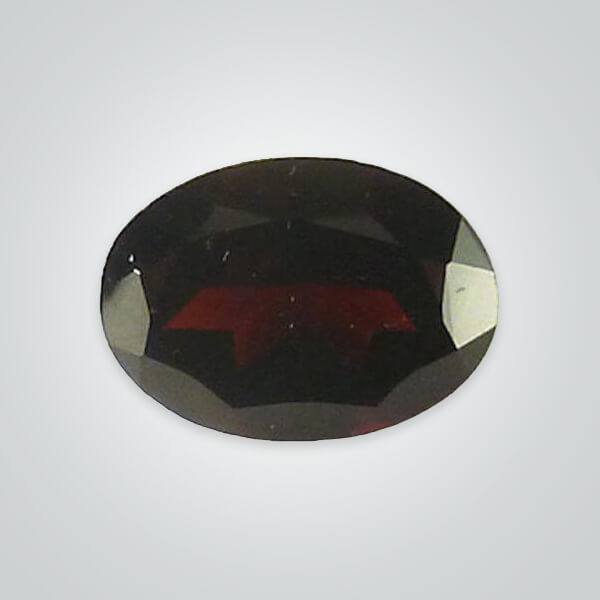
How to Identify a Synthetic Emerald?
A synthetic emerald is prepared in the laboratory that virtually shares all the physical, chemical and optical characteristics of the natural emerald. The process to develop gems synthetically started in late 1800s, but the first true emerald was developed in the year 1935. Carroll Chatham, the great chemist, developed the first 1 carat true emerald, which at present can be seen in the display section of Smithsonian Institution.
Differentiating a synthetic emerald from a natural one is very difficult and the recent technological developments have made it even more difficult because the new synthetic techniques put natural-looking inclusions similar to natural emeralds. This makes it more difficult to identify the difference between a natural emerald and the one created in laboratory. Before buying an emerald, one should test it properly and purchase only after validating the authenticity and being completely satisfied.
Here, some of the methods are described which will help you identify synthetic emerald gemstones.
- Use a jeweler’s loupe or magnifying glass to find out the flaws
Use a high-power magnifying glass or preferably a jeweler’s loupe having 10x triple lens. Hold it in a way that light strikes in the form of a single narrow beam. If you see some irregular patterns or tiny flaws in the stone, it is a real gemstone but not necessarily an emerald. On the other hand, if the stone is very clear, with no inclusions, it will be a synthetic emerald (made by man but real). There might be chances that it won’t be a gemstone at all. Some people get confused with gas bubbles because both type of gems can feature them. In this case, if gas bubbles appear near the inclusions, then it is a natural gem. But if your emerald is showing a swarm of bubbles without inclusions then it could be a synthetic emerald.
- Look for sparkling effects
When real emeralds are placed under the light, no colorful flashes are produced. On the other hand, if a rainbow of flashes is produced in your gem, it won’t be a real emerald.
- Examine it by color
A real emerald is usually dark green or blue-green in color. If your emerald is yellow-green in color (yellow-green beryl), it can be a heliodor, green garnet or an olivine. You should also know that a light green beryl is also known as green beryl. As green beryl and emerald bear very close characteristics, different jewelers could have different views about the gem.
- Identify from the facets
It is seen that some weak materials, like glass, quickly wear down. You should look for the facets’ edges – if they are worn and soft, the emerald could be fake. To identify a synthetic emerald, look for slightly rounded facet edges or a dimpled “orange peel” texture. You can figure it out under slight magnification.
- Use the dichroscope
You might have noticed that many gemstones when seen from different angles appear differently (with respect to color). You can use an affordable tool dichroscope to identify synthetic emerald. On the one end of dichroscope, place your emerald. Use a diffused white light and illuminate the gemstone. Then look through the viewing window of the tool and rotate the emerald. If your emerald is real, it will be blue-green from one angle and slightly yellow-green from the other angle. You should also consider the following points:
- If the stone shows two very different colors (strong dichroism), it means you have a very high-quality emerald.
- There is a possibility that you may get unusual results because of fluorescent lights’ properties, facet’s internal reflection, or light reaching the viewing window without being processed through gemstone. So, it would be wise to use this test with other methods and not as the only definitive test.
- The low prices will make it clear:
While purchasing the emerald, if you find them available at low prices, they might be synthetic emerald gemstones. At that time, trust your instincts because a vividly green and natural emerald usually cost around $500 USD a carat. So, if the price is very low, it might be a glass crystal, not emerald. You can easily get a synthetic emerald for as low as $75 USD.
- Get it professionally appraised:
If you still have doubts about the authenticity of your stone, take it to a nearby gem testing center or a jeweler. They have the latest specialized tools with which they will examine your stone and provide you a definite answer, including detailed description of your gem.
To get your stone checked, look for the jeweler who has the accreditation from a national organization. You can also go to a jeweler who holds a trade school degree in geology. Avoid the appraisers suggested by the retailer with whom you are looking to buy emerald.
Some other Tests
- Examining the inclusions:
Earlier it was very easy to determine the difference between a natural emerald and a synthetic one by just examining the inclusions but with the advancement in technology, the synthetic pieces also have more inclusions and make it hard to identify the difference. You should use a jeweler’s loupe and check whether gem’s any “pocket” contain both crystals and gas bubbles. If present, be happy because you have a natural emerald. This type of inclusion is also called as “three phase inclusion”.
- Shine a black-light on the emerald
To proceed with this test, you will require a “long wave” black-light. Put it in a dark or dim room and shine the black-light on to it. The stone will reflect fluorescent color, then you should emphasize on the following characteristics:
- If the fluorescence is bright red, yellow or olive-green, it is a synthetic emerald.
- If there is no fluorescence, your emerald might be natural (there is one synthetic type of emerald which do not emit fluorescence).
- If the fluorescence is orange-red or dull red, it could be natural or synthetic.
These are a few methods which will help you determine the authenticity of emerald. Thus, if you follow these steps, you can always identify the natural emerald from a synthetic one.






